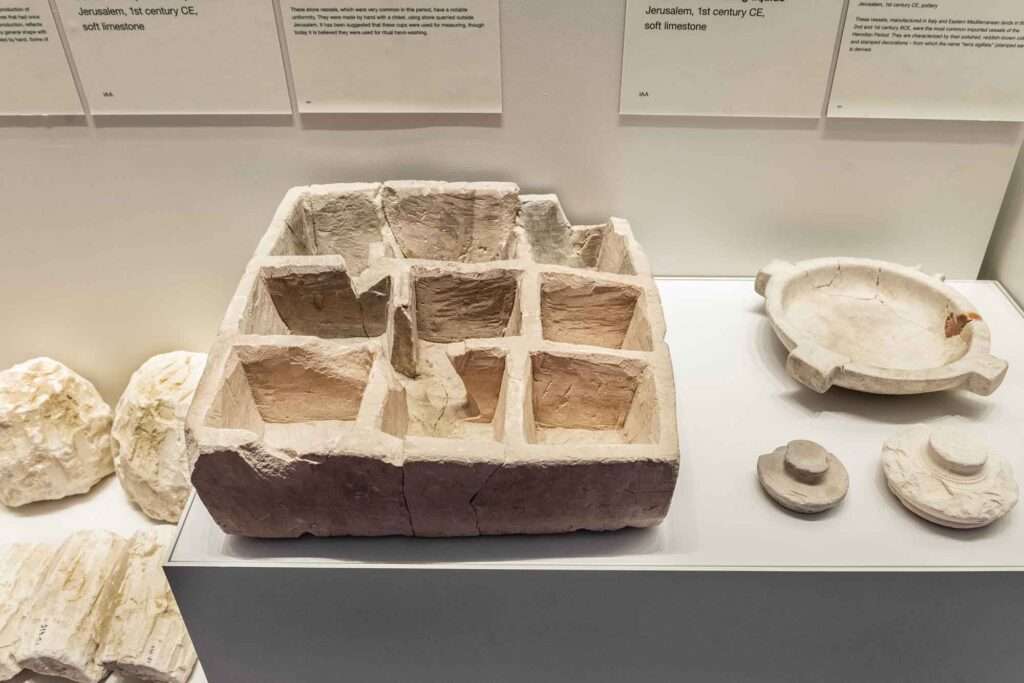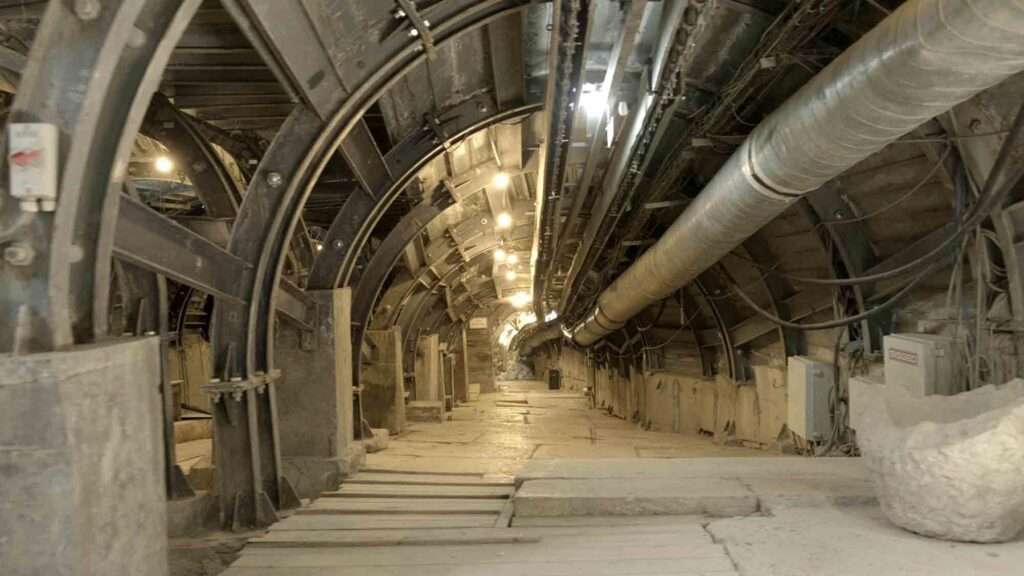A 2,000-year-old stone box unearthed burned and damaged in Israel’s ancient City of David was probably a casualty of a revolt against Roman invaders by occupied Jews, say experts.
The limestone box, divided into nine equal sections, was probably used by a trader to sell pre-weighed goods close to the city’s temple.
Experts have dated the box back to the era of Israel’s Second Temple which was destroyed in what’s known as the Great Jewish Revolt between 66 and 74 AD.
The bloody war, prompted by Emperor Nero’s punishing taxes saw Roman forces expelled from Israel with 6,000 legionaries slaughtered in a single battle.
The box was discovered during excavations by the Israel Antiquities Authority, or IAA, who described the find as “rare”.
An IAA statement obtained by Newsflash said: “A rare multi-compartment stone container, dating back to the days of the Second Temple – about 2,000 years ago, is being revealed to the public for the first time at the Israel Museum, Jerusalem.
“The square box measuring 30 x 30 cm, was carved from soft limestone and divided inside into nine equal-sized compartments.

“The multi-compartment container was discovered in a destruction layer inside an ancient store dated to the end of the Second Temple period that once stood alongside the Pilgrimage Road in the City of David.
“The sides of the box are blacked, indicating that is was burnt perhaps during events of the Great Jewish Revolt, which ultimately led to the destruction of Jerusalem.”
They added: “Researchers assume that the box was used for commercial purposes such as displaying premeasured goods.”
Experts say the discovery shows there was a thriving market life running through the city’s Pilgrimage Road.
Excavation directors Dr Yuval Baruch and Ari Levy said: “During the excavations of the Pilgrimage Road, where the box was discovered, many objects have been found testament to the flourishing commercial activity that took place alongside the road during the Second Temple period.
“During the excavations, we have uncovered ceramic and glass vessels, production and cooking facilities, various measuring tools, stone weights and coins.
“Together, these objects suggest that the road was connected to commercial activities such as a lively urban market.

“The Pilgrimage Road connecting the Pool of Siloam to the Temple Mount was the main thoroughfare of the city 2,000 years ago.
“It seems that the newly discovered box was related to this commercial activity that took place along the Pilgrimage Road.”
The statement continued: “The economic and commercial systems of Second Temple Jerusalem were similar to other large cities in the Roman world and boasted large markets featuring local and imported goods, some even exotic.
“As a temple city and pilgrim center, ancient Jerusalem’s markets must have had specialised items, uncommon found in other areas.
“Daily life and trade in Second Temple Jerusalem must have been conducted with strict adherence to Jewish purity laws.
“Evidence of this can be seen by a number of distinct archaeological finds such as thousands of limestone vessel fragments discovered in excavations throughout the ancient city and its surroundings.
“The widespread use of stone vessels can be explained by Jewish law (halacha) which designates that stone, unlike made clay or metal, cannot become impure.
“Therefore, it is possible that stone vessels were re-used over and over for long periods of time.”
Levy and Baruch said: “It seems that the multi-compartment stone box from the City of David was related to the unique Jerusalem economy conducted in the shadow of the temple maintaining strict observance and in accordance with purity laws.

“Therefore, we can consider this box a distinctly Jerusalem find.”
The statement went on: “Pieces of another similar box were discovered about 50 years ago by the archaeologist Nachman Avigad during excavations in the Jewish Quarter.
“Upon discovery, Avigad humorously called the object a ‘nuts and seeds bowl’, a name which has stuck since. Interestingly, all similar boxes have been discovered in Jerusalem, mostly in the City of David however, the newly discovered box is the only complete example.
“At this stage of research, archaeologists still wonder what exactly it was used for.”
To find out more about the author, editor or agency that supplied this story – please click below.
Story By: Joseph Golder, Sub-Editor: Joseph Golder, Agency: Newsflash
The Ananova page is created by and dedicated to professional, independent freelance journalists. It is a place for us to showcase our work. When our news is sold to our media partners, we will include the link here.




